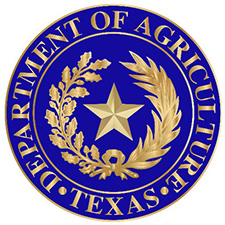… a ‘Pretty Flat’ outlook for farm exports in 2023
After reaching a record high in 2022, U.S. farm exports will plateau amid a world of uncertainties, said the USDA chief economist on Tuesday. The strong dollar and slower economic growth worldwide will be a drag on exports, now forecast by USDA at $193.5 billion this fiscal year, down slightly from the estimated record of $196 billion in the fiscal year that ended on Sept. 30.
California’s San Joaquin Valley looks to solar, not farming, as climate change worsens
California’s San Joaquin Valley will become increasingly difficult to farm as climate change intensifies. But with the right regulations and policies, the state’s multi-billion dollar agricultural belt could become something else — a clean energy powerhouse that the state desperately needs.
Interest rates are the top policy concern among farmers
Congress is on the cusp of overhauling the farm program but the top question among farmers about government action is interest rate policy, which lies outside the jurisdiction of the Senate and House Agriculture committees, said a Purdue University poll on Tuesday. Concern about interest rates coincided with the Federal Reserve campaign to squelch inflation through regular increases in interest rates.
USDA awards $223 million to expand meat processing capacity
Trying to create “more, better and new markets” for U.S. producers, the Agriculture Department awarded a total of $223 million in grants, loans and loan guarantees to expand meat and poultry processing capacity, said Agriculture Secretary Tom Vilsack on Wednesday. Increased competition would support farmer income, said the USDA.
TODAY’S QUICK HITS
Turkey will cost more: Americans will pay record-high prices for Thanksgiving turkey at the grocery store but there should be enough turkeys to go around, although they may weigh less than usual. (CoBank)
Southern Sierra forests die: Over the past decade, wildfires, drought and bark beetle infestations contributed to the loss of nearly one-third of conifer forests in the lower half of the southern Sierra Nevada, with potential consequences for wildlife. (Los Angeles Times)
Swine fever virus in feed: The virus that causes the devastating African swine fever can survive for at least a year in feed depending on storage temperatures, said scientists who found that two types of additives were “effective mitigants.” (Swine Health Information Center)
Climate impact on fish: Regulators and the seafood industry are considering the possibility that some fish populations may not recover from population declines related to climate change. (Associated Press)
Nitrate levels in Nebraska: The statewide median level of nitrate in water in Nebraska, often a result of nitrogen fertilizer, has doubled since 1978; exposure to high levels of nitrate in drinking water can pose health risks. (Flatwater Free Press)











